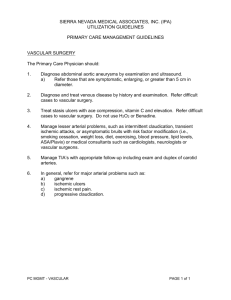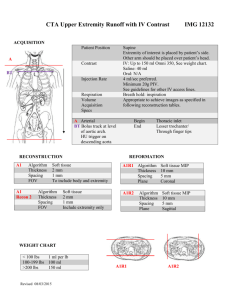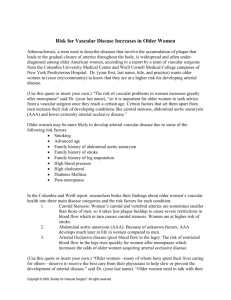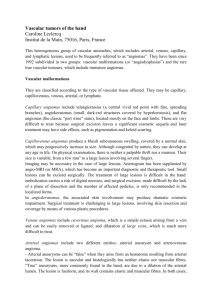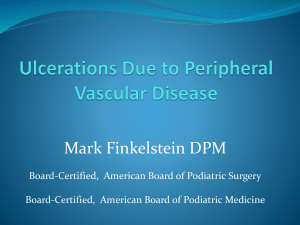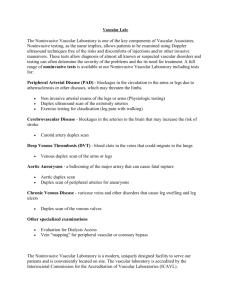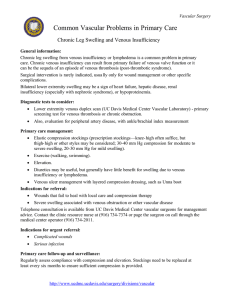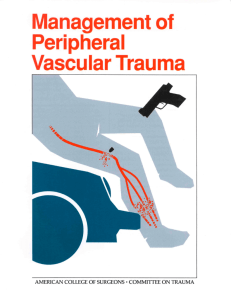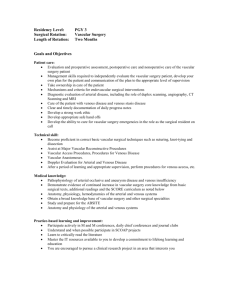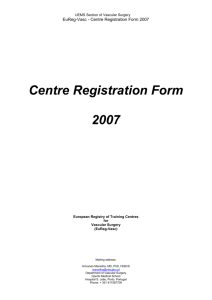Vascular-Medicine
advertisement
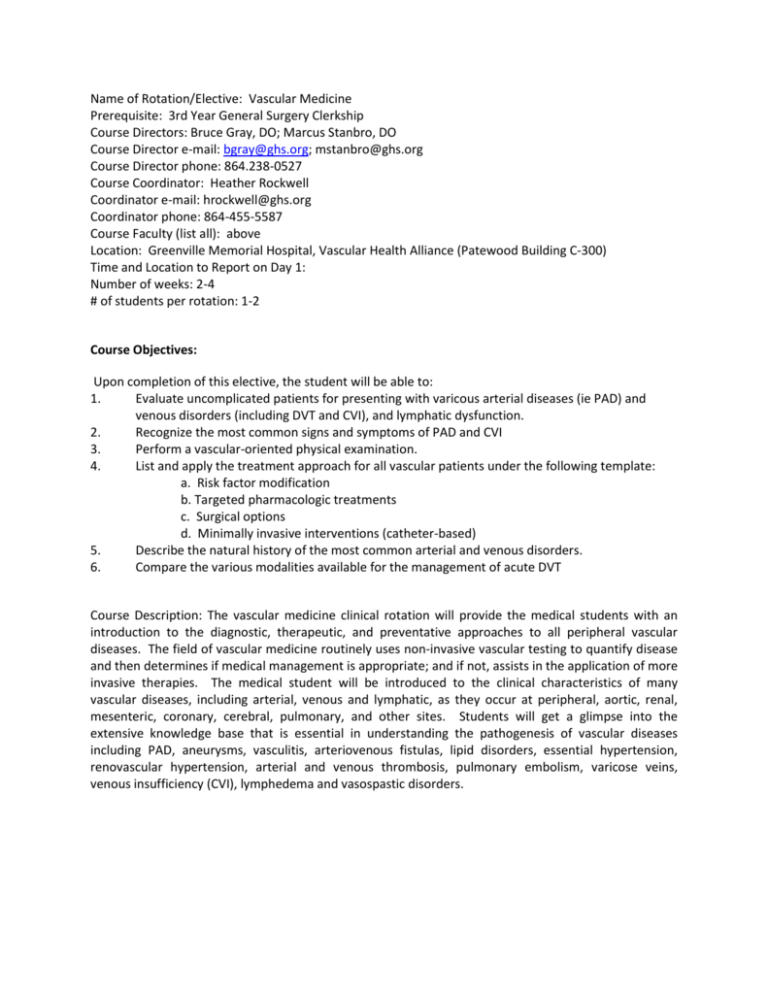
Name of Rotation/Elective: Vascular Medicine Prerequisite: 3rd Year General Surgery Clerkship Course Directors: Bruce Gray, DO; Marcus Stanbro, DO Course Director e-mail: bgray@ghs.org; mstanbro@ghs.org Course Director phone: 864.238-0527 Course Coordinator: Heather Rockwell Coordinator e-mail: hrockwell@ghs.org Coordinator phone: 864-455-5587 Course Faculty (list all): above Location: Greenville Memorial Hospital, Vascular Health Alliance (Patewood Building C-300) Time and Location to Report on Day 1: Number of weeks: 2-4 # of students per rotation: 1-2 Course Objectives: Upon completion of this elective, the student will be able to: 1. Evaluate uncomplicated patients for presenting with varicous arterial diseases (ie PAD) and venous disorders (including DVT and CVI), and lymphatic dysfunction. 2. Recognize the most common signs and symptoms of PAD and CVI 3. Perform a vascular-oriented physical examination. 4. List and apply the treatment approach for all vascular patients under the following template: a. Risk factor modification b. Targeted pharmacologic treatments c. Surgical options d. Minimally invasive interventions (catheter-based) 5. Describe the natural history of the most common arterial and venous disorders. 6. Compare the various modalities available for the management of acute DVT Course Description: The vascular medicine clinical rotation will provide the medical students with an introduction to the diagnostic, therapeutic, and preventative approaches to all peripheral vascular diseases. The field of vascular medicine routinely uses non-invasive vascular testing to quantify disease and then determines if medical management is appropriate; and if not, assists in the application of more invasive therapies. The medical student will be introduced to the clinical characteristics of many vascular diseases, including arterial, venous and lymphatic, as they occur at peripheral, aortic, renal, mesenteric, coronary, cerebral, pulmonary, and other sites. Students will get a glimpse into the extensive knowledge base that is essential in understanding the pathogenesis of vascular diseases including PAD, aneurysms, vasculitis, arteriovenous fistulas, lipid disorders, essential hypertension, renovascular hypertension, arterial and venous thrombosis, pulmonary embolism, varicose veins, venous insufficiency (CVI), lymphedema and vasospastic disorders.
